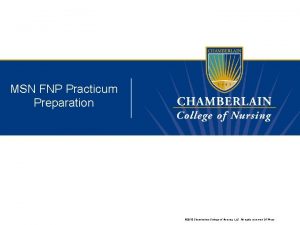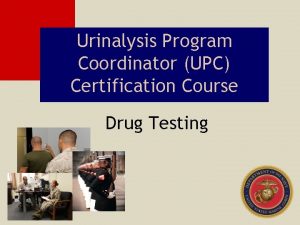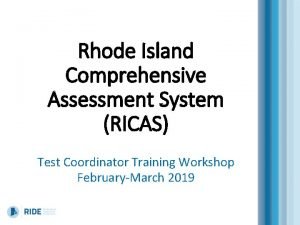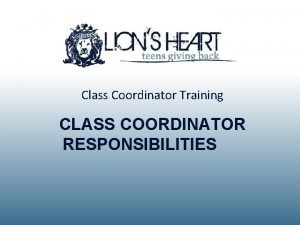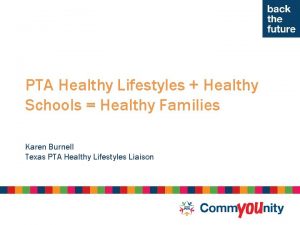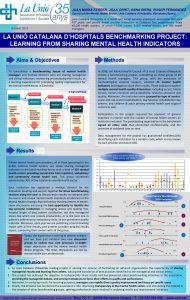Healthy Schools Joan Murphy Healthy Settings Coordinator Schools




























- Slides: 28

Healthy Schools Joan Murphy Healthy Settings Coordinator Schools Health Promotion Agency

? Where did the concept of healthy schools come from?

Healthy Schools Concept • Basis of Healthy schools is the Ottawa Charter for Health Promotion (WHO 1986) – Building healthy public policy – Creating supportive environments – Strengthen community action – Developing personal skills – Reorienting health services Shift in dominant paradigms The traditional health education approach The health promoting school approach

Principles of a Health Promoting Schools • ENHPS Conference Greece 1997 identified 10 principles: 1. 2. 3. 4. 5. 6. 7. 8. 9. 10. Democracy, Equity, Empowerment and action competence, School environment, Curriculum, Teacher training, Measuring success, Collaboration, Communities, Sustainability Based on a Settings Approach

What is a healthy school?

A healthy school is… • . . one in which the whole school community (WSC) work together in a planned one to promote the health of the WSC by developing policies practices and structures that underpin a sustainable program of action. . (HPA 2006) • Adopts a process of self evaluation and action planning against a set of internationally recognised quality criteria • Criteria aims to increase school health and wellbeing in 3 key elements of work (ethos and environment, quality of learning and teaching quality of management) • It involves a process


Criteria for Healthy Schools in N. I 1. 2. 3. 4. provide a safe, secure and stimulating environment which encourages pupils to be health and safety conscious both in and out of school. actively promote pupils’ self esteem and self confidence through the provision of opportunities to contribute widely to the life of the school, successfully enabling pupils to take initiatives, make choices and exercise responsibility for their own health and that of others. create a climate in which good relationships, respect and consideration for others flourish, encouraging individuals to make a valuable contribution through their respective skills and personal qualities. formulate, implement and review regularly a range of health related policies for staff and pupils which are in accord with the school aims.

Criteria cont’d 5. 6. 7. 8. plan and implement a coherent health curriculum which complies with requirements and is accessible to all pupils. provide stimulating challenges for all pupils through a wide range of physical, academic, social and community activities. develop good liaison with parents/guardians, other schools and the local community on a range of health related initiatives make effective use of appropriate outside agencies and specialist services to advise, support and contribute to the promotion of health, directly or through the curriculum

Healthy Schools in Northern Ireland • • Strategic context Investing for Health 2002 Fit Futures Report 2005 Our Children and Young People-Our Pledge (A ten year strategy for children and young people in Northern Ireland 2006 -2016) • School Development Plan

Investing for Health • Chapter 15 Working in Settings • Schools and colleges • Health Education identified as one of six cross curricular themes for schools • Benefits to be gained from promoting schools as a setting to improve health and well-being for whole school community

Fit Futures Report • • Six priorities for action identified; in particular Creating Healthy schools and Supporting Healthy Early Years Recommends that: Schools need to reflect what is taught in the classroom through their ethos and environment (e. g school meals, vending machines, tuck shops ? conflicting messages) Need for whole school approach Establish a healthy school partnership-all schools healthy 2015. Integrate health improvement planning into school development process Schools supported in this process through training and guidance

Our Children and Young People-Our Pledge (A ten year strategy for children and young people in Northern Ireland 2006 -2016) • • • Five high level Outcomes Being Healthy Enjoying, learning and achieving Living in Safety and stability Experiencing economic and environmental well-being Contributing positively to community and society; and overarching aim: • Living in a society which respects their rights • Outcomes link to criteria for healthy schools

School Development Planning • The Department of Education made regulations in 2005 which require each school to prepare and maintain a school development plan. The regulations included a requirement that the arrangements for promoting the health and wellbeing of staff and pupils must be assessed as part of the school development plan. • In particular: the contribution made by the school to promoting healthy lifestyles, including health education initiatives, physical education, school meals and links with statutory and voluntary sectors

History of Healthy Schools in Northern Ireland (N. I) • Schools in N. I have long history of involvement • All funding for healthy schools has been in association with HELG (health education liaison group) • Opportunity in early 1990’s presented with ENHPS (funding secured DE, DHSSPS and Europe) • UK wide involvement.





Results of Evaluation • 77% found the tool excellent or good, clear layout comprehensive familiar format Has made a significant contribution to: • The whole school approach, involving parents, staff and the wider community • Congruence with self evaluation, and school improvement education policy • Promoting empowerment and participation • Promoting competency in knowledge, skills, attitudes and practice

Impact on school policy • 59% had developed new policies • 45% had modified existing policies • 69% planned to modify or develop policies in the next academic year

School actions Increase in: • Sexual health (14%) • Initiatives to promote better communication (19%) • Healthy eating (17%) • 72% were encouraged to participate in other initiatives not previously considered

Impacts-positive • • • Knowledge of pupils 95% Attitudes of pupils 94% 91% knowledge of staff 92% attitudes of staff An increase in staff morale and team building, a sense of common purpose Broadly based school teams built a sense of community in the and out of school Stronger relationships within and out of school Positive recognition, favourable inspection, positive community reputation Coherent framework for health in the school

Impacts-negative • Increased demands on time • Lack of resources, responsibility allowance • Lack of parental support

Recommendations • Mainstreaming • Co-ordination of effort • Capacity building/initial teacher training/health and other professions • Toolkit dissemination • Development of other resources • Strategic partnerships/accountability/planning • Systems to share learning


Links between Healthy Schools and Extended Schools • Both involve a whole school approach • It involves a process of self evaluation and assessment • Recognises the school as a key setting ‘hub’ for health promotion and attainment • 5 high level outcomes of an extended school can be addressed through the 8 criteria that form the benchmark of a healthy school • Extended schools can provide the financial resources to support healthy schools e. g after school clubs, breakfast clubs, ‘Cook it’ training courses for parents and wider school community • Seeks to improve health and well being of the whole school community • Both seek to increase knowledge and skills development for pupils staff and wider school community • Both integrate health improvement planning into school development process • Schools are supported in this process through training and guidance

When health is absent Wisdom cannot reveal itself, Art cannot become manifest Strength cannot fight, Wealth becomes useless And intelligence cannot be applied. Herophilus, 325 BC
 Nspcc schools coordinator
Nspcc schools coordinator Healthy soil healthy life poster ideas
Healthy soil healthy life poster ideas Healthy forests healthy communities poster contest
Healthy forests healthy communities poster contest Healthy nurse healthy nation
Healthy nurse healthy nation Journal on healthy food healthy mind
Journal on healthy food healthy mind Office of healthy schools
Office of healthy schools Healthy eating questionnaire for schools
Healthy eating questionnaire for schools Emotionally healthy schools
Emotionally healthy schools Reach safety schools
Reach safety schools Huntsville powerschool
Huntsville powerschool Lcif coordinator duties
Lcif coordinator duties Define uu
Define uu Tide portal ct
Tide portal ct Digi dino - rotr
Digi dino - rotr Chamberlain practicum handbook
Chamberlain practicum handbook Urinalysis program coordinator
Urinalysis program coordinator District data coordinator
District data coordinator Work immersion coordinator
Work immersion coordinator How does light sensor work
How does light sensor work Ricas.pearsonsupport.com/student
Ricas.pearsonsupport.com/student Ishita works as a corporate event coordinator
Ishita works as a corporate event coordinator School wins coordinator duties and responsibilities
School wins coordinator duties and responsibilities Class coordinator responsibilities
Class coordinator responsibilities West lafayette campus title ix coordinator
West lafayette campus title ix coordinator Class coordinator responsibilities
Class coordinator responsibilities Duties and responsibilities of boy scout coordinator
Duties and responsibilities of boy scout coordinator Total army sponsorship program counseling
Total army sponsorship program counseling Physical activity and nutrition coordinator
Physical activity and nutrition coordinator Test coordinator
Test coordinator














